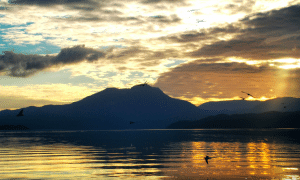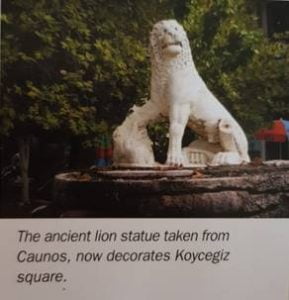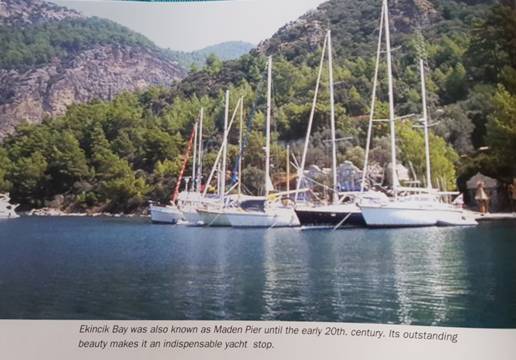“This world would make you crazyThis night, these stars, this smell’’– Orhan Veli

Looking from the thick shadows of eucalyptus and palm trees to the serene shores of the Köycegiz Lake, you find yourself amidst to the sweetest of dreams… The wish to be one with this magnificent nature, to explore every corner of it engulfs you. The prettiest trip one can take is the boat trip to the Dalyan River that passes the Köycegiz Lake and connects to the sea or to the labyrinthine waterways of the delta and to the silken sand of the Iztuzu beach washed with the waves of the Mediterranean. The starting point of this trip through, where water, woods and the thick reeds join up with history can be embarked from either Köycegiz or Iztuzu. Köycegiz is a land of colour. The lake that is sometimes turquoise and sometimes emerald-green is due to the surfacing plankton’s myriad shades of green. The sun climbing in the azure-blue sky on the porcelain-white orange and lemon blossoms or their bright orange and yellow fruits depending on the season as well as in the colours of hundreds of different flower. An explosion of colour is also witnessed from the various and sundry flowers dotting the hills and valleys. While the rich colours reflecting on the mirror of the lake from the sky change from red to different shades of purple and then to the navy blue of the sky, the boats and reeds bobbing up and down on gentle waves gradually turn into indistinct lines against the scenery. Experiencing the deep emotions this moment brings, you are surrounded by the increasingly intensifying aroma of citrus, pine flower and water scents carried by the gentle wind that blows all day. Here life is quiet and nature is virgin in spite of the roughness of mankind
The square starting just behind the reed-covered gazebos of the charming cafes lined up along the marble-covered quayside that stretches across Koycegiz promenade is surrounded by buildings dating back to the late 19th to the early 20th century. While this well-preserved architectural heritage pulls you into a mysterious nostalgia, a statue of a lion in the centre of the square attracts your attention. The statue that was found in the ancient city of Caunos in the 1960s during an illegal excavation and that was placed in its present location after being captured by the police-force documents the fact that culture and art has been shining in Köyceğiz since antiquity. The light filtered through the windows of the old single or two-story houses lined up along the back alleys carries you to a time tunnel between the past and the present.
lined up along the marble-covered quayside that stretches across Koycegiz promenade is surrounded by buildings dating back to the late 19th to the early 20th century. While this well-preserved architectural heritage pulls you into a mysterious nostalgia, a statue of a lion in the centre of the square attracts your attention. The statue that was found in the ancient city of Caunos in the 1960s during an illegal excavation and that was placed in its present location after being captured by the police-force documents the fact that culture and art has been shining in Köyceğiz since antiquity. The light filtered through the windows of the old single or two-story houses lined up along the back alleys carries you to a time tunnel between the past and the present.
A trained eye would be quick to recognize the fact that the colourful boats along the quay feature a different design. These wide, small boats with low waterlines were developed over time to navigate the many shallow straits shored-up by the capricious sand dunes in order to carry cargo and passengers along the lake, channel and delta. In the 18th and 19th centuries, when there were no proper roads to connect Köycegiz to the inlands, these boats equipped with lateens, would navigate the waters of the lake and Dalyan River, dragging behind them timber tied to each other like rafts or having their open holds loaded with the produce of the region. The boats entering the sea after a break or customs check at the Dalyan quay would transfer their cargo to large vessels anchored in front of Delik Ada, right across the strait and would return having loaded grocery and millinery goods brought from Rhodes. As recently as the beginning of the 20th century, the ecosystem was the lifeblood of transportation in the region and the boats were its indispensable vehicles. These boats continue to preserve their traditional design although fitted with diesel engines, are now the most important factor of the tourism of the region.
Source: Koycegiz – Dalyan A Journey Through History Within The Labyrinth of Nature, (pages: 28-30), Altan Türe, 2011, Faya Kültürel Yayınları



Comments